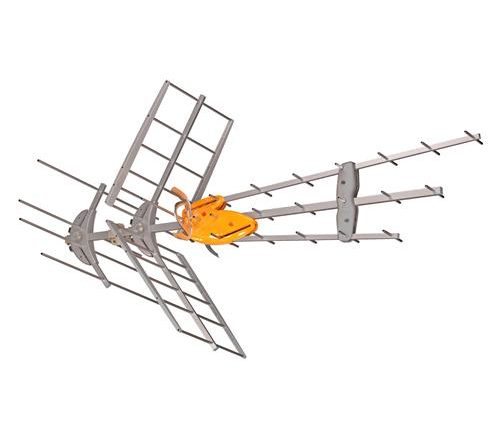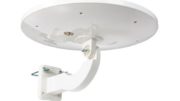I get it, your significant other doesn’t want your roof turning into an antenna farm. It’s nice to be able to have a nice clean look up there. So, you may choose a rotator that will let you move the antenna to point in different directions. Let’s look at the options available and see what’s best.
Why is this even a problem?
Yes, a lot of people live where there is only one choice for TV, and all the broadcast towers are in one direction. But what if you’re between markets? What if you want to get Milwaukee and Chicago sports, or catch the New York sports and the Hartford news? There are tons of scenarios where broadcast towers are in two completely opposite directions. That’s when you have to get creative.
In a lot of cases, you can use an antenna like our Xtreme Signal HDB8X which has two panels that swivel. That antenna doesn’t do a lot of VHF reception though, and if one of the channels is on the VHF band you’ll need to think outside the box. There are also omnidirectional antennas like our MS2002 but they tend to have reduced range. In cases like this, you either need to rotate the antenna you have or you need more than one antennas. Here’s the argument for both plans.
Two antennas
If the towers are far away from each other, two antennas pointing in two different directions will give you 24/7 reception to every TV in the home. They can be on the same mast but I do recommend that they be at least 3 feet apart. Use the exact same cable length from each, and feed them both into a combiner like this one that doesn’t care whether you’re sending UHF or VHF. This is a more or less bulletproof solution that will last you a long time and you’ll never have to worry that someone will want to watch a station in one direction on one TV and another station in another direction on the other. If your antenna is feeding multiple TVs, this is a very real scenario.
On the other hand, you are talking about twice the upfront investment and if these are larger antennas you probably will want to put them on two different masts. The whole family may not support you turning the roof into an antenna farm, either. Not everyone thinks antennas are a beautiful thing.
Rotator
Using a rotator will let you point your antenna where you need to, and today’s rotators are motorized with full remote control. They mean only one antenna goes up on the roof and only one antenna is needed. However, there are some downsides.
Multiple TVs mean that not everyone wants to watch the same channel. This can be a problem if the antenna needs to rotate in order to watch just one channel. In cases like that, someone’s going to end up disappointed. It also means that you may potentially lose recordings on a DVR if you don’t rotate the antenna at the proper time.
The biggest problem with rotators, though, is wear-and-tear. Unfortunately, no matter how durable they make these things they do eventually wear out. How soon they wear out really depends on your climate, and it’s not just cold and wet weather that can affect a rotator. Heat and intense sun can warp or break down plastics and that can become a problem when the wet weather does inevitably come.
Using a rotator also means running a separate control wire up to the roof, and that could be a problem if you’re thinking of reusing existing cable company wire for your antenna.
What to do?
Personally, I favor multiple antennas. I think it’s the best solution especially if there are multiple TVs. Not everyone is going to agree with the high upfront cost, but remember that there’s an upfront cost to a rotator as well and the antenna will probably outlast the rotator, although both will last quite a while.





